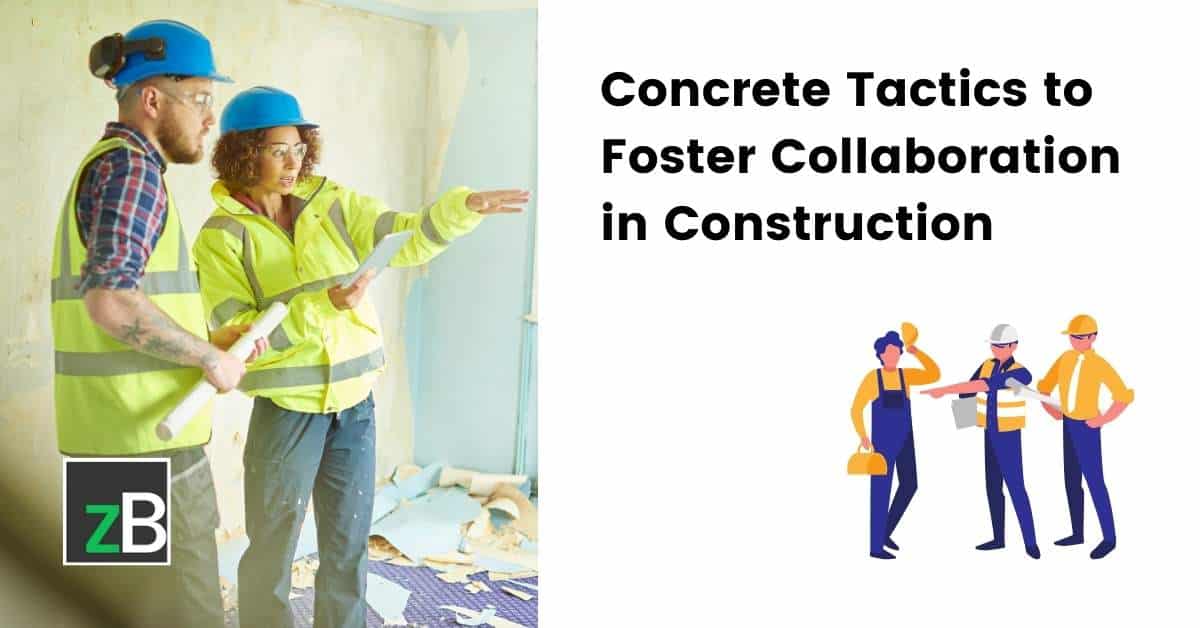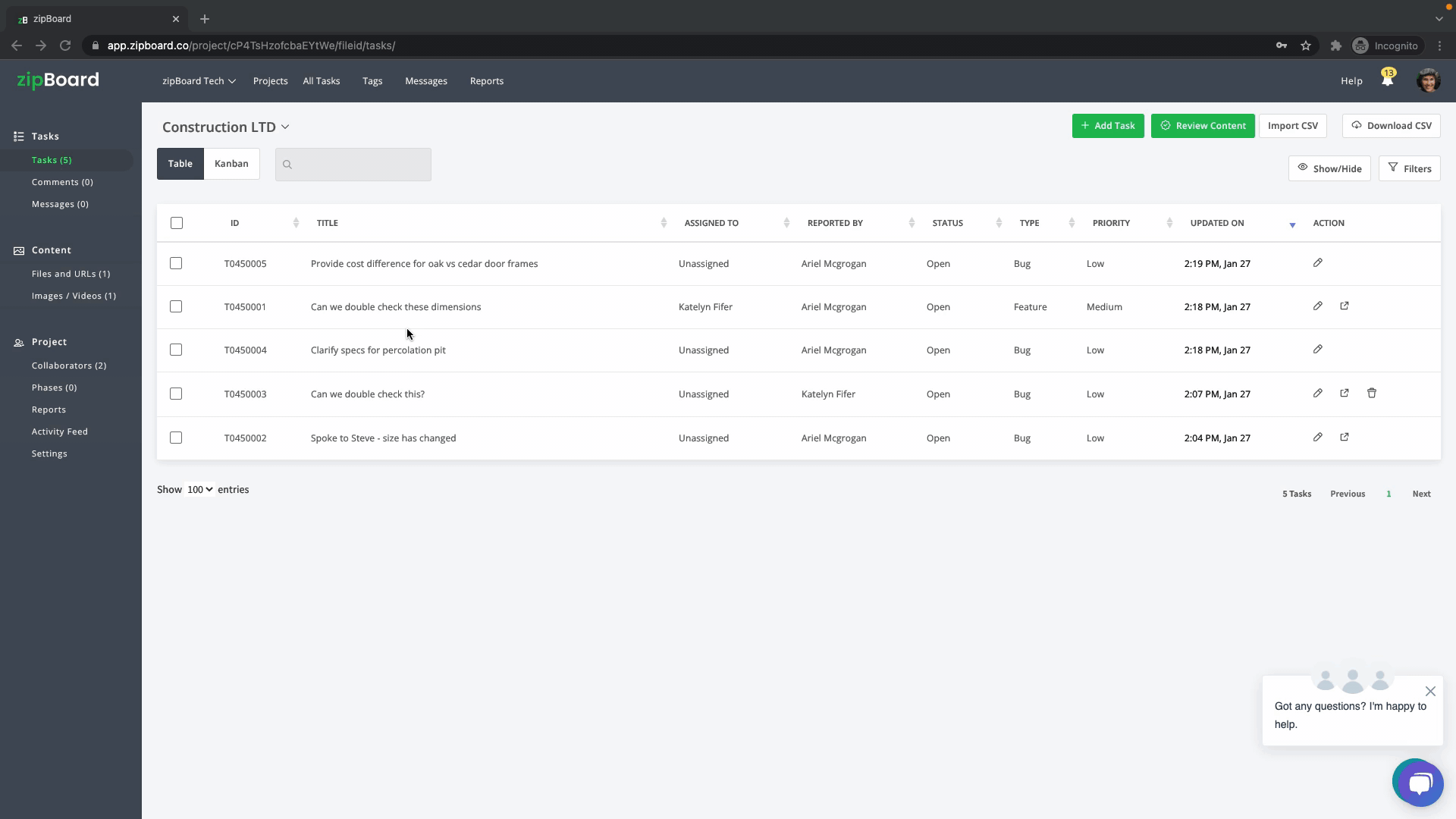Concrete Tactics to Foster Collaboration in Construction
17 Aug

Table of Contents
ToggleWhy collaboration in construction is key
How does one complete a complex project on time, within budget, all while ensuring a quality product for the client? Effective communication is your solution! Collaboration in construction leads to benefits such as better time management, being cost-effective, increasing value for the client, reducing errors, and eliminating unnecessary rework.
Good collaboration in construction projects is more than just everyone completing tasks on schedule. It involves building a strong relationship with all stakeholders to complete a project. Being able to cooperate and coordinate efforts to improve productivity is essential.
Achieving true collaboration can be challenging, as it requires careful planning, coordination, and communication from all parties involved in the project. Here you will find the importance of collaboration and why zipBoard can help with your collaborative delivery success.
What are the problems with the traditional procurement model?
Traditionally, construction projects have been built in conflicting environments. Each member of the construction team is put in a position to compete with the other members, to earn a reasonable profit. Therefore, team members are frequently more interested in achieving short-term individual goals, rather than the project’s long-term end goal. Progress is diminished by poor coordination between trades, incomplete drawings and specifications, and underfunding by the owner which slows cash flow and causes further conflict and delay.
The project owner needs a team that works together to complete a high-quality project and builds, according to plans and specifications; to deliver the product on time and within the budgeted price. It’s not that teams are choosing to not work cohesively, but many of the obstacles to collaboration have to do with the flawed system itself. Improve your system by collaborating through zipBoard.
Top Benefits of Collaboration in Construction
The success of a project depends on communication and performance. Good communication can correct planning flaws, eliminate delays, and change orders. Improved communication also leads to innovations and technical solutions that improve quality. Group communication supports better decision-making and prevents final product defects, ensuring that the owner is satisfied. Using a construction review tool like, zipBoard will enhance worker relationships rather than transactions, leading to long-term relationships and future projects, all due to effective collaboration in construction.
Creating a collaborative workplace is essential from day one, to ensure that all members of the team have a cohesive plan. With an organised workflow, you can see how your team’s tasks contribute to the whole project. This creates an appreciation for other members, contractors, and stakeholders rather than misunderstanding due to lack of communication. Below is a specific list of the top benefits that you will gain from using a collaborative space such as zipBoard…
- Decrease changes and rework.
- Higher profits.
- Project delivery that meets deadlines.
- Satisfied owners and other project stakeholders.
- Improved brand reputation.
- Increased long-term business and referrals.
- Projects that stay within budget.
- Reduce wasted materials, money, and manpower.
- Clear communication of shared vision and goals.
3 ways to improve collaboration in construction
Reduce bureaucracy
Allow your project managers, estimators, and architects to work together to achieve a well-rounded viewpoint by eliminating bureaucracy! When every role feels equally heard during pre-construction planning, it positively impacts the long-term results of a construction project.
A collaborative process must be built on trust and respect for each stakeholder’s expertise. Many professionals appreciate collaboration in construction with a project manager leading the team because it gives them a level of trust in the process. The construction manager’s independent viewpoint is not linked to a specific design or agenda; it helps establish a foundation of respect among team members. Trust develops as people begin to understand each other’s specific abilities and perspectives. Hence, they can create a group understanding of the workflow, project goals, and how to work together.
It requires giving and taking for positive relationships. Ensure that your employees feel like their efforts are appreciated and that they are heard. Respect may start at the top, but it needs to be passed down the line.
Encourage feedback
Collaboration in construction requires transparency and accountability. Transparent communication allows for constructive feedback. If you do not encourage active feedback, you will not get it. By asking for feedback, you can avoid negative comments about a project, as workers and clients have a chance to be heard when you ask for their feedback. Keep communication positive and effective when you encourage feedback during construction management!
Webinar
Streamline Your Construction Review Process
Have a well-defined review/approval process that facilitates better feedback, speeds up turnaround time by 50%, and results in greater end quality.
Check Free WebinarStreamline the Pre-construction Phase
Collaboration is most effective when it starts in the early planning stages of a project. Including the leaders on a project, owner, architect, engineers, general contractor, and key subcontractors can lead to better design and decision making. Stakeholders should have input on scheduling, coordination, materials, etc. during the design phase. It begins the project with a cohesive mindset and sets the tone for the work environment.
A well-integrated team will lead to excellent project performance and reduce unnecessary challenges that may arise. Allocating risks to the parties best equipped to deal with them is a collaborative method that will put out fires before they have even started.
How subcontractors benefit from collaboration in construction
There are many specialized areas of construction work, and it means that subcontracting can contribute to innovation, with the right expertise. When subcontractors work together and with other members of the team, a common vision can be fostered, and it includes a wide variety of solutions to problems. Why have one solution when you can have an abundance of creative solutions?
However, there can be difficulties with the relationships that subcontractors experience in the workplace. General contractors do not always prioritize creating cooperative relationships with subcontractors. They do not trust the managerial competence of their subcontractors and often interfere with their site workflow, creating avoidable conflicts. Subcontractors are dismissed as a job cost instead of a resource.
Subcontractors resent the approval systems that delay payments and the presence of general contractors in ways that undermine their performance. Subcontractors can also feel that their expertise is not being used and appreciated on projects and they have to accept decisions by less qualified professionals that are ineffective, affecting the entire collaboration in construction projects.
A collaborative submittal review space gives the subcontractors a way to create an effective relationship with general contractors, by working on items together, rather than butting heads due to a lack of streamlined communication.
Using the right tool is essential for effective communication
Transmitting information between team members can be difficult. It leaves room for missing elements of data and gaps in understanding. If you want to reduce those gaps and foster collaboration in construction, it’s important to take measured steps toward that goal, which requires the usage of the right tools.
The tradition of meeting in person for extensive owner/design team meetings is not always possible, especially with clients who are tending to their business interests. A shared workspace allows project teams from anywhere in the world to stay in touch and continually move the project forward.

Once team members log in, they can access digital project information which reduces the amount of back and forth exchange of project-related paperwork such as documents, drawings, invoicing, etc.
Conclusion
Collaboration in construction projects is the key to project success.
Without communication of important decisions and information, the project will not reach its full potential. This can result in surpassing the budget and extending deadlines.
Involving all stakeholders in the project from the pre-construction phase to the very end ensures clarity on individual tasks and streamlined workflows.
Frequent communication and feedback are also necessary to reduce issues and keep topics transparent.
Construction projects are a team effort that can create a productive work environment. Therefore, collaboration in construction should be one of your priorities when you start a new project.
Improve Collaboration in Construction With zipBoard
Start your free trial or book a demo today so that we can create a tailored solution for you.
Book DemoStart Free TrialRecent Posts
- Why Your Team Needs a Content Feedback System (Not Just Comments in Docs) May 28, 2025
- Content Approvals Are Slowing You Down — Here’s the Fix May 26, 2025
- How to Streamline Content Review and Approval — Best Practices, Tools & Automation May 12, 2025
- What Is Content Operations? And Why It Breaks Without a Feedback & Approval System May 3, 2025
- Why Designers Need a Website Visual Feedback Tool: Improve Design Reviews & Client Collaboration April 25, 2025
©️ Copyright 2023 zipBoard Tech. All rights reserved.


